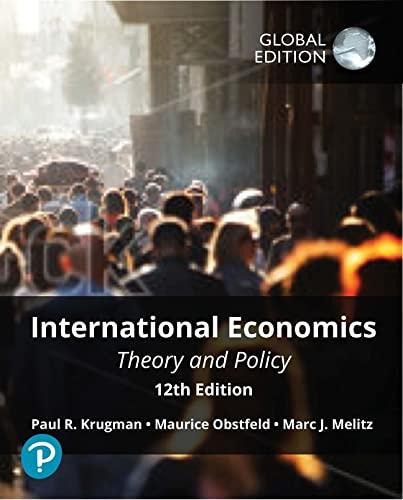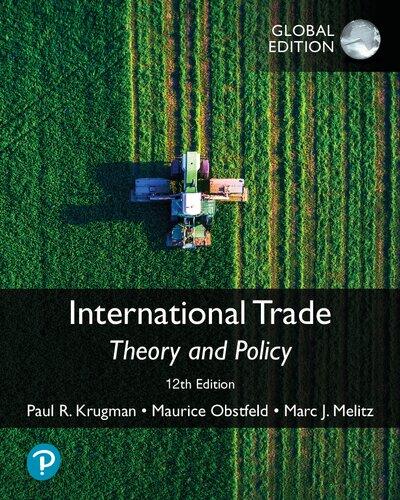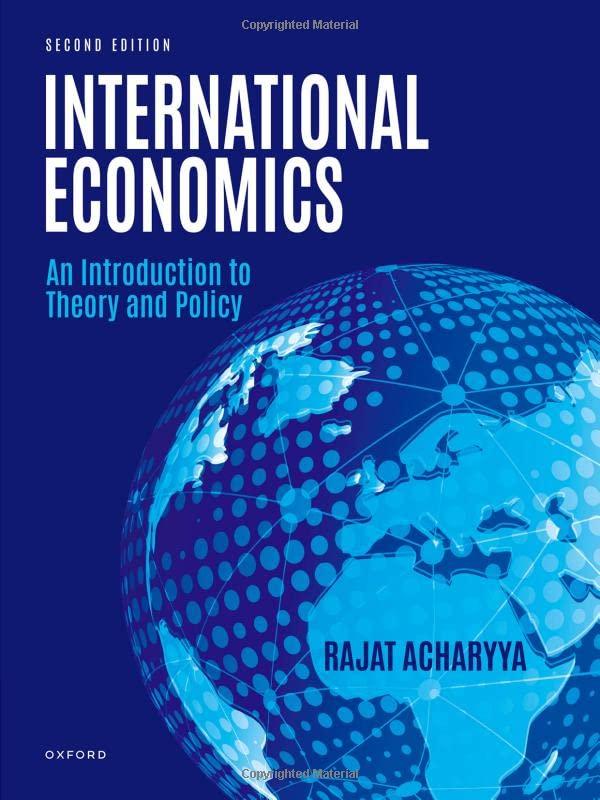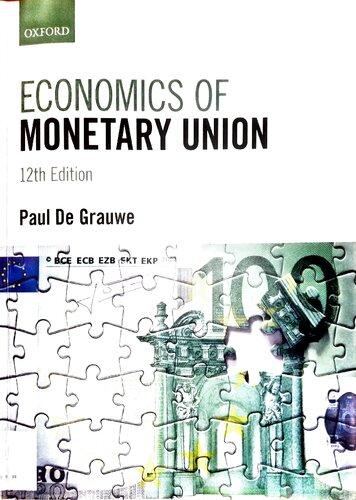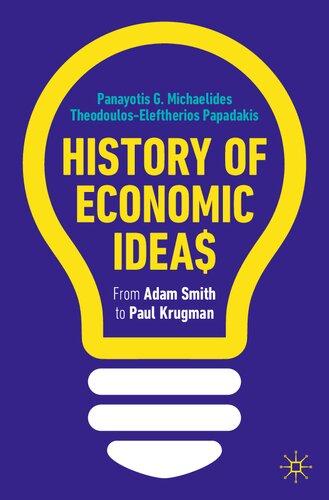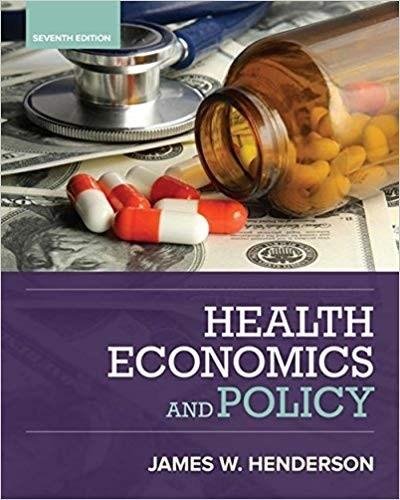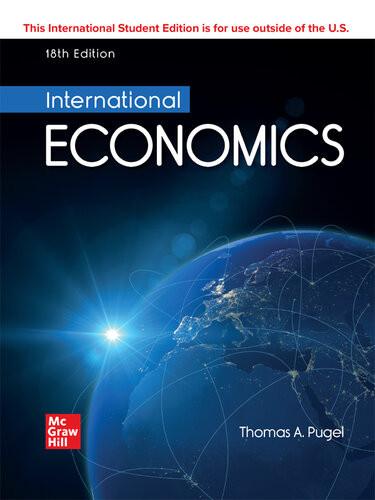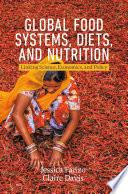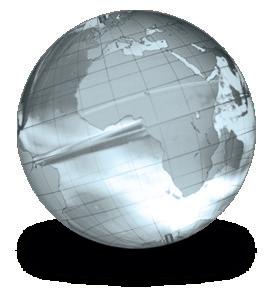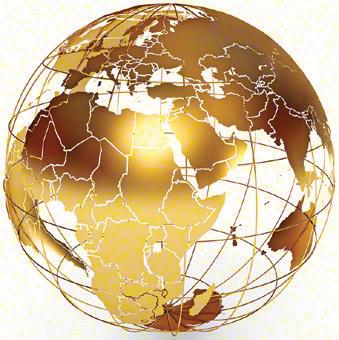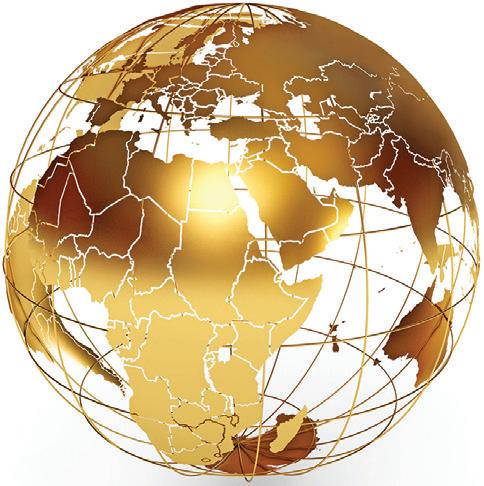International Economics THEORY & POLICY
TWELFTH EDITION
GLOBAL EDITION
Paul R. Krugman
Graduate Center of the City University of New York
Maurice Obstfeld
University of California, Berkeley
Marc J. Melitz
Harvard University
Please contact https://support.pearson.com/getsupport/s/contactsupport with any queries on this content.
Cover Image by Aleksandr
Ozerov/Shutterstock
PearsonEducationLimited
KAO Two KAO Park Hockham Way Harlow Essex CM17 9SR United Kingdom
and Associated Companies throughout the world
Visit us on the World Wide Web at: www.pearsonglobaleditions.com
© Pearson Education Limited 2023
The rights of Paul R. Krugman, Maurice Obstfeld, and Marc Melitz to be identified as the authors of this work, has been asserted by them in accordance with the Copyright, Designs and Patents Act 1988.
Authorized adaptation from the U.S. edition, entitled InternationalEconomics:TheoryandPolicy, 12th Edition, ISBN 978-0-135-76685-9 by Paul R. Krugman, Maurice Obstfeld, and Marc Melitz, published by Pearson Education © 2022.
PEARSON, ALWAYS LEARNING, and MYLAB are exclusive trademarks owned by Pearson Education, Inc. or its affiliates in the U.S. and/or other countries.
All rights reserved. No part of this publication may be reproduced, stored in a retrieval system, or transmitted in any form or by any means, electronic, mechanical, photocopying, recording or otherwise, without either the prior written permission of the publisher or a license permitting restricted copying in the United Kingdom issued by the Copyright Licensing Agency Ltd, Saffron House, 6–10 Kirby Street, London EC1N 8TS.
All trademarks used herein are the property of their respective owners. The use of any trademark in this text does not vest in the author or publisher any trademark ownership rights in such trademarks, nor does the use of such trademarks imply any affiliation with or endorsement of this book by such owners. For information regarding permissions, request forms, and the appropriate contacts within the Pearson Education Global Rights and Permissions department, please visit www.pearsoned.com/permissions/.
This eBook is a standalone product and may or may not include all assets that were part of the print version. It also does not provide access to other Pearson digital products like MyLab and Mastering. The publisher reserves the right to remove any material in this eBook at any time.
ISBN 10: 1-292-40971-1
ISBN 13: 978-1-292-40971-9
eBook ISBN 13: 978-1-292-40979-5
British Library Cataloguing - in - Publication Data
A catalogue record for this book is available from the British Library
Typeset in by B2R Technologies Pvt. Ltd.
Nothing illustrates better than the COVID-19 pandemic how movements of people, flows of data, and commerce connect our interdependent world. Because pathogens do not respect national borders, the SARS-CoV-2 virus caused a global economic shock and a worldwide downturn, sending governments throughout the world scrambling for policies to stop the spread of the disease while supporting their economies. As this book went to press, the crisis was still underway, with the arrival of several effective vaccines giving hope of a road back to normalcy. Many lessons will be drawn from the recent pandemic experience, but one is the importance of an international perspective for analyzing events of worldwide economic significance and countries’ responses. The purpose of this book is to equip students with intellectual tools for understanding the economic implications of global interdependence.
What’s New in the Twelfth Edition
We have thoroughly updated the content and extensively revised several chapters. These revisions respond both to users’ suggestions and to some important developments on the theoretical and practical sides of international economics. The most far-reaching changes are the following:
■ Chapter 2, World Trade: An Overview The world attained a high degree of economic interdependence by the eve of World War I over a century ago, but governments retreated behind trade barriers amid the Great Depression of the interwar period. A renewed trend toward economic opening—the “second great globalization”— commenced after World War II. This revised chapter uses new data to provide a better picture of long-term trends in globalization, highlighting how the world reached historically unprecedented levels of economic interconnection only after 1990.
■ Chapter 4, Specific Factors and Income Distribution Import competition from developing countries—especially from China—is often singled out both in the press and by politicians as the main culprit for declines in manufacturing employment in the United States. This chapter updates our case study on the potential links between these two trends. It also updates our discussion of the politics of restrictions on trade in sugar. A new box introduces our coverage of the restrictive trade policies of the U.S. Trump administration starting in 2017—President Trump’s trade war.
■ Chapter 6, The Standard Trade Model The chapter includes a new case study on the gains to U.S. consumers from Chinese imports. A new box covers the impact of terms of trade shocks on developing countries and in particular the experience during the COVID-19 pandemic.
■ Chapter 7, External Economies of Scale and the International Location of Production
Featured in this revised chapter is a new emphasis on financial centers (notably New York and London), along with discussion of the impacts of Brexit and COVID-19.
■ Chapter 8, Firms in the Global Economy: Export and Foreign Sourcing Decisions, and Multinational Enterprises Increasingly, the goods we consume are produced in “Global Value Chains” that stretch around the world. The chapter features an extended firm-level trade model that describes how firms make global sourcing decisions. A related new empirical box details the foreign sourcing decisions of U.S. manufacturing firms.
■ Chapter 9, The Instruments of Trade Policy In the past few years, trade policy has received an inordinate amount of attention with the coverage of the evolving cycle of U.S. trade restrictions and retaliation by its trading partners during the Trump administration. A new case study details the evolution of this trade war and quantifies its impact on U.S. consumers and producers. A new box describes how the long-running dispute between the United States and Europe over export subsidies to Boeing and Airbus was finally resolved. The chapter also features an updated discussion of the new US-Mexico-Canada trade agreement (USMCA) that has replaced NAFTA, with a focus on the implications for North American automobile supply chains.
■ Chapter 10, The Political Economy of Trade Policy Recent years have seen some significant setbacks to the march toward freer trade. A key arena of trade conflict, likely to continue in future years, has been in free market economies’ relations with China. In line with that development, this chapter now includes added focus on U.S.–China trade tensions.
■ Chapter 12, Controversies in Trade Policy In response to political tensions over the ways in which technological change and trade are affecting trade patterns, regional development within countries, and employment prospects across different labor skill groups, a new focus on the prospects for industrial policies has emerged in both the United States and Europe. This chapter updates our prior discussion of industrial policy by concentrating on R&D-intensive products, where most of the current debate centers.
■ Chapter 13, National Income Accounting and the Balance of Payments A notable recent trend has been the movement of intellectual property and other intangible capital across borders for the purpose of minimizing corporate tax burdens. This chapter features a new box describing how Ireland’s accommodative tax regime has led to anomalies in its GDP data. While the description of cross-border profit shifting will be of substantive interest to students, the Irish example also illustrates the limitations of GDP as a measure of national economic activity or welfare.
■ Chapter 14, Exchange Rates and the Foreign Exchange Market: An Asset Approach A striking empirical regularity of the period since the global financial crisis of 2008–2009 has been the continuing failure of covered interest parity as an empirical regularity. This revised chapter moves the material on covered interest parity from an appendix to the main text, provides added emphasis on the distinction between uncovered and covered interest parity, and foreshadows a new discussion in Chapter 20 on the reasons behind recent departures from covered interest parity.
■ Chapter 15, Money, Interest Rates, and Exchange Rates This chapter now uses the recent hyperinflation in Venezuela as an example to underscore the long-run relationship between money supply and prices.
■ Chapter 17, Output and the Exchange Rate in the Short Run The chapter adds material on how global value chains influence exchange rate pass-through.
■ Chapter 19, International Monetary Systems: A Historical Overview We extend the historical narrative to cover the effects of the Trump trade war on global trade and the COVID-19 pandemic. An important addition is a new box on the question of currency manipulation—a topic that draws on much of what students will have learned up to this point in the book and is likely to retain relevance in coming years.
■ Chapter 20, Financial Globalization: Opportunity and Crisis We link ongoing deviations from covered interest parity to changing financial regulations, and we also introduce the exchange rate disconnect puzzle.
■ Chapter 21, Optimum Currency Areas and the Euro The chapter updates the discussion of Brexit to cover the 11th-hour partial trade deal that the EU and United Kingdom reached in December 2020 as well as the prior withdrawal agreement and its implications for the Irish border. Also included is coverage of euro area policy innovations in response to the COVID-19 pandemic.
■ Chapter 22, Developing Countries: Growth, Crisis, and Reform A new box highlights the key role of global financial conditions in driving emerging economies’ growth— the global financial cycle. Key topics explored include the motivations for emerging market economies to manage their exchange rates and the benefits of exchange rate flexibility in the face of global financial forces.
Solving Learning and Teaching Challenges
The idea of writing this book came out of our experience in teaching international economics to undergraduates and business students since the late 1970s. We perceived two main challenges in teaching. The first was to communicate to students the exciting intellectual advances in this dynamic field. The second was to show how the development of international economic theory has traditionally been shaped by the need to understand the changing world economy and analyze actual problems in international economic policy.
We found that published textbooks did not adequately meet these challenges. Too often, international economics textbooks confront students with a bewildering array of special models and assumptions from which basic lessons are difficult to extract. Because many of these special models are outmoded, students are left puzzled about the real-world relevance of the analysis. As a result, many textbooks often leave a gap between the somewhat antiquated material to be covered in class and the exciting issues that dominate current research and policy debates. That gap has widened dramatically as the importance of international economic problems—and alongside that, enrollment in international economics courses—has grown.
This book is our attempt to provide an up-to-date and understandable analytical framework for illuminating current events and bringing the excitement of international economics into the classroom. In analyzing both the real and monetary sides of the subject, our approach has been to build up, step-by-step, a simple, unified framework for communicating the grand traditional insights as well as the newest findings and approaches. To help the student grasp and retain the underlying logic of international economics, we motivate the theoretical development at each stage by pertinent data and policy questions.
Students assimilate international economics most readily when it is presented as a method of analysis vitally linked to events in the world economy rather than as a body of abstract theorems about abstract models. Our goal has therefore been to stress concepts and their application rather than theoretical formalism. Accordingly, the book does not presuppose an extensive background in economics. Students who have had a course in economic principles will find the book accessible, but students who have taken further courses in microeconomics or macroeconomics will find an abundant supply of new material. Specialized appendices and mathematical postscripts have been included to challenge the most advanced students.
For use in a two-semester course, we follow the standard practice of dividing the book into two halves devoted to trade and to monetary questions. Although the trade and monetary portions of international economics are often treated as unrelated subjects, even within one textbook, similar themes and methods recur in both subfields. We have made it a point to illuminate connections between the trade and monetary areas when they arise. At the same time, we have made sure that the book’s two halves are completely self-contained. Thus, a one-semester course on trade theory can be based on Chapters 2 through 12, and a one-semester course on international monetary economics can be based on Chapters 13 through 22.
Our Vision
Years after the global financial crisis of 2008–2009, the world economy is still afflicted by tepid economic growth and, for many people, stagnating incomes. This bleak picture has been accentuated by the economic shock dealt by the COVID-19 pandemic.
Extensive attempts by governments to support their economies, while successful in avoiding worst-case scenarios, will leave countries worldwide with legacies of sharply higher public debts, decimated service sectors, and deeply scarred labor forces. Emerging markets remain vulnerable to the ebb and flow of global capital and the ups and downs of world commodity prices. Uncertainty weighs on investment globally, driven not least by worries about the future of the liberal international trade regime built up so painstakingly after World War II.
This twelfth edition therefore comes out at a time when we are more aware than ever before of how events in the global economy influence each country’s economic fortunes, policies, and political debates. The world that emerged from World War II was one in which trade, financial, and even communication links between countries were limited. Nearly two decades into the 21st century, however, the picture is very different. Globalization has arrived big-time. International trade in goods and services has expanded steadily over the past six decades thanks to declines in shipping and communication costs, globally negotiated reductions in government trade barriers, the widespread outsourcing of production activities, and a greater awareness of foreign cultures and products. New and better communications technologies, notably the Internet, have revolutionized the way people in all countries obtain and exchange information. International trade in financial assets such as currencies, stocks, and bonds has expanded at a much faster pace even than international product trade. This process brings benefits for owners of wealth but also creates risks of contagious financial instability. Those risks were realized during the recent global financial crisis, which spread quickly across national borders and has played out at huge cost to the world economy. Of all the changes on the international scene in recent decades, however, perhaps the biggest one remains the emergence of China—a development that is already redefining the international balance of economic and political power in the coming century.
Imagine how astonished the generation that lived through the depressed 1930s as adults would have been to see the shape of today’s world economy! Nonetheless, the economic concerns that drive international debate have not changed that much from those that dominated the 1930s nor indeed since they were first analyzed by economists more than two centuries ago. What are the merits of free trade among nations compared with protectionism? What causes countries to run trade surpluses or deficits with their trading partners, and how are such imbalances resolved over time? What causes banking and currency crises in open economies, what causes financial contagion between economies, and how should governments handle international financial instability? How can governments avoid unemployment and inflation, what role do exchange rates play in their efforts, and how can countries best cooperate to achieve their economic goals? As always in international economics, the interplay of events and ideas has led to new modes of analysis. In turn, these analytical advances, however abstruse they may seem at first, ultimately do end up playing a major role in governmental policies, in international negotiations, and in people’s everyday lives. Globalization has made citizens of all countries much more aware than ever before of the worldwide economic forces that influence their fortunes. Despite some predictions that the recent pandemic may put the brakes on globalization, it seems more likely that most aspects of globalization will survive once the COVID-19 virus is finally vanquished. As the book illustrates, globalization can be an engine of prosperity, but like any powerful machine, it can do damage if managed unwisely. The challenge for the global community is to get the most out of globalization while coping with the challenges that it raises for economic policy.
To help students explore this complex landscape, this book covers the most important recent developments in international economics without shortchanging the enduring theoretical and historical insights that have traditionally formed the core of the subject. We have achieved this comprehensiveness by stressing how recent theories
have evolved from earlier findings in response to an evolving world economy. Both the real trade portion of the book (Chapters 2 through 12) and the monetary portion (Chapters 13 through 22) are divided into a core of chapters focused on theory, followed by chapters applying the theory to major policy questions, past and current. In Chapter 1, we describe in some detail how this book addresses the major themes of international economics. Here we emphasize several of the topics that previous authors failed to treat in a systematic way.
Increasing Returns and Market Structure Even before discussing the role of comparative advantage in promoting international exchange and the associated welfare gains, we visit the forefront of theoretical and empirical research by setting out the gravity model of trade (Chapter 2). We return to the research frontier (in Chapters 7 and 8) by explaining how increasing returns and product differentiation affect trade and welfare. The models explored in this discussion capture significant aspects of reality, such as intraindustry trade and shifts in trade patterns due to dynamic scale economies. The models show, too, that mutually beneficial trade need not be based on comparative advantage.
Firms in International Trade Chapter 8 also summarizes exciting new research focused on the role of firms in international trade. The chapter emphasizes that different firms may fare differently in the face of globalization. The expansion of some and the contraction of others shift overall production toward more efficient producers within industrial sectors, raising overall productivity and thereby generating gains from trade. Those firms that expand in an environment of freer trade may have incentives to outsource some of their production activities abroad or take up multinational production, as we describe in the chapter.
Politics and Theory of Trade Policy Starting in Chapter 4, we stress the effect of trade on income distribution as the key political factor behind restrictions on free trade. This emphasis makes it clear to students why the prescriptions of the standard welfare analysis of trade policy seldom prevail in practice. Chapter 12 explores the popular notion that governments should adopt activist trade policies aimed at encouraging sectors of the economy seen as crucial. The chapter includes a theoretical discussion of such trade policy based on simple ideas from game theory.
Asset Market Approach to Exchange Rate Determination The modern foreign exchange market and the determination of exchange rates by national interest rates and expectations are at the center of our account of open-economy macroeconomics. The main ingredient of the macroeconomic model we develop is the interest parity relation, augmented later by risk premiums (Chapter 14). Among the topics we address using the model are exchange rate “overshooting,” inflation targeting, behavior of real exchange rates, balance-of-payments crises under fixed exchange rates, and the causes and effects of central bank intervention in the foreign exchange market (Chapters 15 through 18).
International Macroeconomic Policy Coordination
Our discussion of international monetary experience (Chapters 19 through 22) stresses the theme that different exchange rate systems have led to different policy coordination problems for their members. Just as the competitive gold scramble of the interwar years showed how beggar-thy-neighbor policies can be self-defeating, the current float challenges national policymakers to recognize their interdependence and formulate policies cooperatively.
The World Capital Market and Developing Countries A broad discussion of the world capital market is given in Chapter 20, which takes up the welfare implications of international portfolio diversification as well as problems of prudential supervision of internationally active banks and other financial institutions. Chapter 22 covers the long-term growth prospects and the specific macroeconomic stabilization and liberalization problems of industrializing and newly industrialized countries. The chapter
reviews emerging market crises and places in historical perspective the interactions among developing country borrowers, developed country lenders, and official financial institutions such as the International Monetary Fund.
Features
This book incorporates a number of special learning features that will maintain students’ interest in the presentation and help them master its lessons.
Case Studies Case studies that perform the threefold role of reinforcing material covered earlier, illustrating its applicability in the real world, and providing important historical information often accompany theoretical discussions.
Special Boxes Less central topics that nonetheless offer particularly vivid illustrations of points made in the text are treated in boxes.
Captioned Diagrams More than 200 diagrams are accompanied by descriptive captions that reinforce the discussion in the text and help the student in reviewing the material.
Learning Goals A list of essential concepts sets the stage for each chapter in the book. These learning goals help students assess their mastery of the material.
Summary and Key Terms Each chapter closes with a summary recapitulating the major points. Key terms and phrases appear in boldface type when they are introduced in the chapter and are listed at the end of each chapter. To further aid student review of the material, key terms are italicized when they appear in the chapter summary.
Problems Each chapter is followed by problems intended to test and solidify students’ comprehension. The problems range from routine computational drills to “big picture” questions suitable for classroom discussion. In many problems we ask students to apply what they have learned to real-world data or policy questions.
Further Readings For instructors who prefer to supplement the textbook with outside readings and for students who wish to probe more deeply on their own, each chapter has an annotated bibliography that includes established classics as well as up-to-date examinations of recent issues.
Supplementary Resources A full range of additional supplementary materials to support teaching and learning accompanies this book.
■ The Online Instructor’s Manual—updated by Hisham Foad of San Diego State University and K. Michael Casey of University of Central Arkansas—includes chapter overviews and answers to end-of-chapter problems.
■ The Online Test Bank offers a rich array of multiple-choice and essay questions, including some mathematical and graphing problems, for each textbook chapter. It is available in Word, PDF, and TestGen formats. This Test Bank was carefully revised and updated by Van Pham of Salem State University. Rafael Alfena Zago from the University of Oklahoma performed accuracy review of the Test Bank.
■ The Accessible Online PowerPoint Presentation was updated by Amy Glass of Texas A&M University. This resource contains text figures and tables and can be used for in-class presentations.
For more information and resources, visit www.pearsonglobaleditions.com.
Acknowledgments
Our primary debt is to Thomas Hayward, the Pearson Content Analyst responsible for the project. We also are grateful to the Pearson Content Producer, Shweta Jain, and the Pearson Managing Producer, Alison Kalil. Kelly Murphy’s efforts as Project Manager with Straive were essential and efficient. We would also like to thank the digital product team at Pearson—Noel Lotz, Courtney Kamauf, and Melissa Honig—for all their hard work on the MyLab course for the twelfth edition. Last, we thank the other editors who helped make the earlier eleven editions of this book as good as they were.
We also wish to acknowledge the sterling research assistance of Lydia Cox, Joan Jennifer Martinez, and Jianlin Wang. We thank the following reviewers, past and present, for their recommendations and insights:
Jaleel Ahmad, Concordia University
Lian An, University of North Florida
Anthony Paul Andrews, Governors State University
Myrvin Anthony, University of Strathclyde, U.K.
Michael Arghyrou, Cardiff University
Richard Ault, Auburn University
Amitrajeet Batabyal, Rochester Institute of Technology
Tibor Besedes, Georgia Tech
George H. Borts, Brown University
Robert F. Brooker, Gannon University
Francisco Carrada-Bravo, W.P. Carey School of Business, ASU
Debajyoti Chakrabarty, University of Sydney
Adhip Chaudhuri, Georgetown University
Jay Pil Choi, Michigan State University
Jaiho Chung, National University of Singapore
Jonathan Conning, Hunter College and The Graduate Center, The City University of New York
Brian Copeland, University of British Columbia
Kevin Cotter, Wayne State University
Barbara Craig, Oberlin College
Susan Dadres, University of North Texas
Ronald B. Davies, University College Dublin
Ann Davis, Marist College
Gopal C. Dorai, William Paterson University
Robert Driskill, Vanderbilt University
Gerald Epstein, University of Massachusetts at Amherst
JoAnne Feeney, State University of New York at Albany
Robert Foster, American Graduate School of International Management
Patrice Franko, Colby College
Diana Fuguitt, Eckerd College
Byron Gangnes, University of Hawaii at Manoa
Ranjeeta Ghiara, California State University,
San Marcos
Neil Gilfedder, Stanford University
Mark Gius, Quinnipiac University
Amy Glass, Texas A&M University
Patrick Gormely, Kansas State University
Thomas Grennes, North Carolina State University
Bodil Olai Hansen, Copenhagen Business School
Michael Hoffman, U.S. Government Accountability Office
Henk Jager, University of Amsterdam
Arvind Jaggi, Franklin & Marshall College
Mark Jelavich, Northwest Missouri State University
Philip R. Jones, University of Bath and University of Bristol, U.K.
Tsvetanka Karagyozova, Lawrence University
Hugh Kelley, Indiana University
Michael Kevane, Santa Clara University
Maureen Kilkenny, University of Nevada
Hyeongwoo Kim, Auburn University
Stephen A. King, San Diego State University, Imperial Valley
Faik Koray, Louisiana State University
Corinne Krupp, Duke University
Bun Song Lee, University of Nebraska, Omaha
Daniel Lee, Shippensburg University
Francis A. Lees, St. Johns University
Jamus Jerome Lim, World Bank Group
Rodney Ludema, Georgetown University
A. G. Malliaris, Quinlan School of Business, Loyola University Chicago
Stephen V. Marks, Pomona College
Michael L. McPherson, University of North Texas
Marcel Mérette, University of Ottawa
Shannon Mitchell, Virginia Commonwealth University
Kaz Miyagiwa, Emory University
Shahriar Mostashari, Campbell University
Shannon Mudd, Ursinus College
Marc-Andreas Muendler, University of California, San Diego
Ton M. Mulder, Erasmus University, Rotterdam
Robert G. Murphy, Boston College
E. Wayne Nafziger, Kansas State University
Steen Nielsen, University of Aarhus
Dmitri Nizovtsev, Washburn University
Terutomo Ozawa, Colorado State University
Arvind Panagariya, Columbia University
Nina Pavcnik, Dartmouth College
Lourenco Paz, Baylor University
Iordanis Petsas, University of Scranton
Van Pham, Salem State University
Gina Pieters, Trinity University
Thitima Puttitanun, San Diego State University
Peter Rangazas, Indiana University-Purdue University Indianapolis
James E. Rauch, University of California, San Diego
Michael Ryan, Western Michigan University
Donald Schilling, University of Missouri, Columbia
Patricia Higino Schneider, Mount Holyoke College
Ronald M. Schramm, Columbia University
Craig Schulman, Texas A&M University
Yochanan Shachmurove, University of Pennsylvania
Margaret Simpson, The College of William and Mary
Enrico Spolaore, Tufts University
Robert Staiger, University of Wisconsin-Madison
Jeffrey Steagall, University of North Florida
Robert M. Stern, University of Michigan
Abdulhamid Sukar, Cameron University
Rebecca Taylor, University of Portsmouth, U.K.
Scott Taylor, University of British Columbia
Aileen Thompson, Carleton University
Sarah Tinkler, Portland State University
Arja H. Turunen-Red, University of New Orleans
Dick vander Wal, Free University of Amsterdam
Gerald Willmann, University of Kiel
Susan Wolcott, State University of New York, Binghamton
Rossitza Wooster, California State University, Sacramento
Bruce Wydick, University of San Francisco
Jiawen Yang, The George Washington University
Kevin H. Zhang, Illinois State University
Although we have not been able to make each and every suggested change, we found reviewers’ observations invaluable in revising the book. Obviously, we bear sole responsibility for its remaining shortcomings.
Paul R. Krugman
Maurice Obstfeld
Marc J. Melitz
September 2021
Global Edition Acknowledgments
We want to thank the following instructors for their work on the Global Edition:
Viktorija Cohen, Vilnius University, Lithuania
Florian Kaulich, Vienna University of Economics and Business, Austria
Archontis Pantsios, Liverpool Hope University, the United Kingdom
Gabriela Sterian, Romanian-American University, Romania
Patrick Terroir, Sciences Po, France
Valentin Cojanu, The Bucharest Academy of Economic Studies, Romania
Michael Graff, KOF Swiss Economic Institute, Switzerland
Kwan Wai KO, The Chinese University of Hong Kong, Hong Kong
Carsten Küchler, Lucerne School of Business, Switzerland
Mario Pezzino, The University of Manchester, the United Kingdom
Natalie Chen, Warwick University, the United Kingdom
Zheng Cao, Aston University, the United Kingdom
